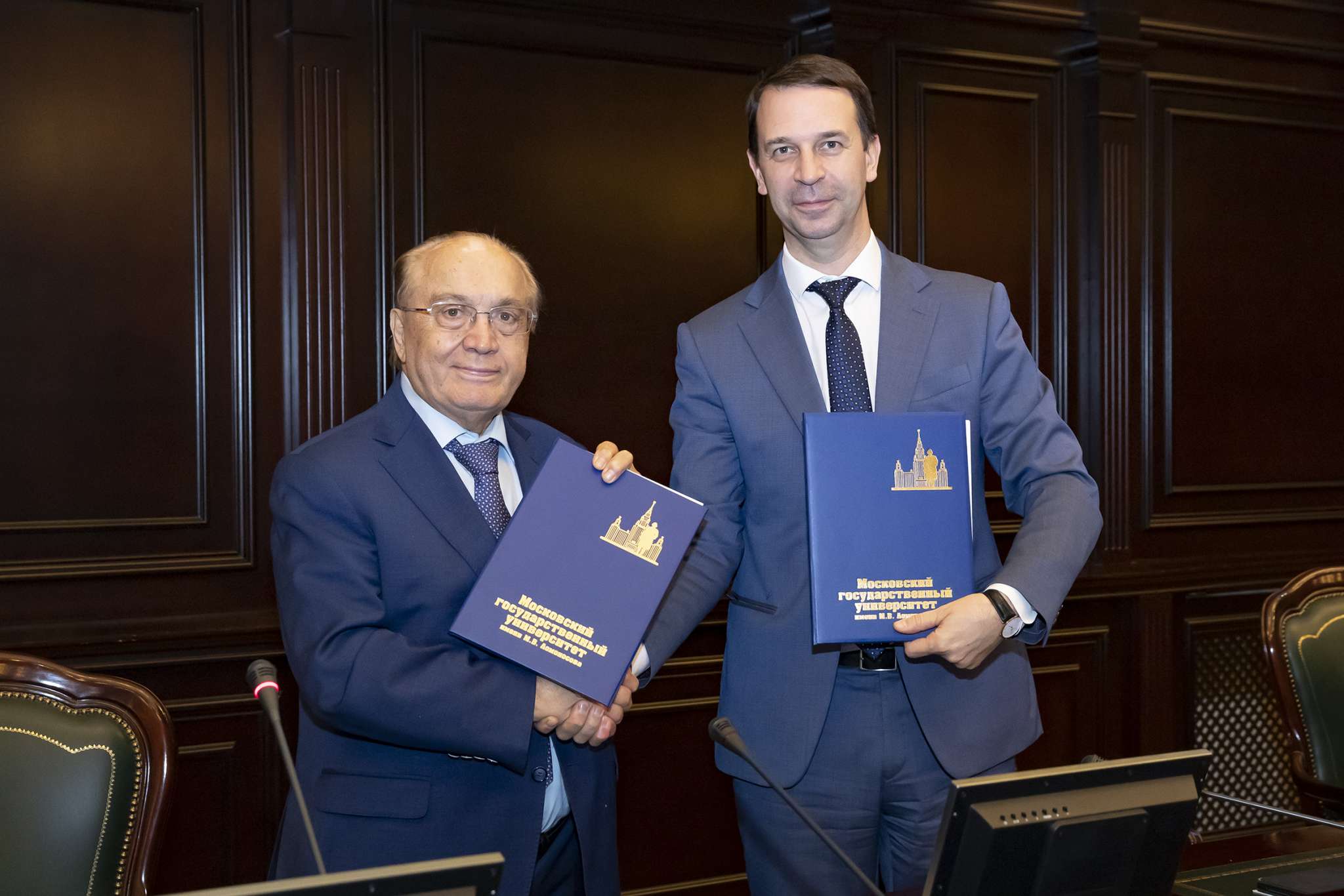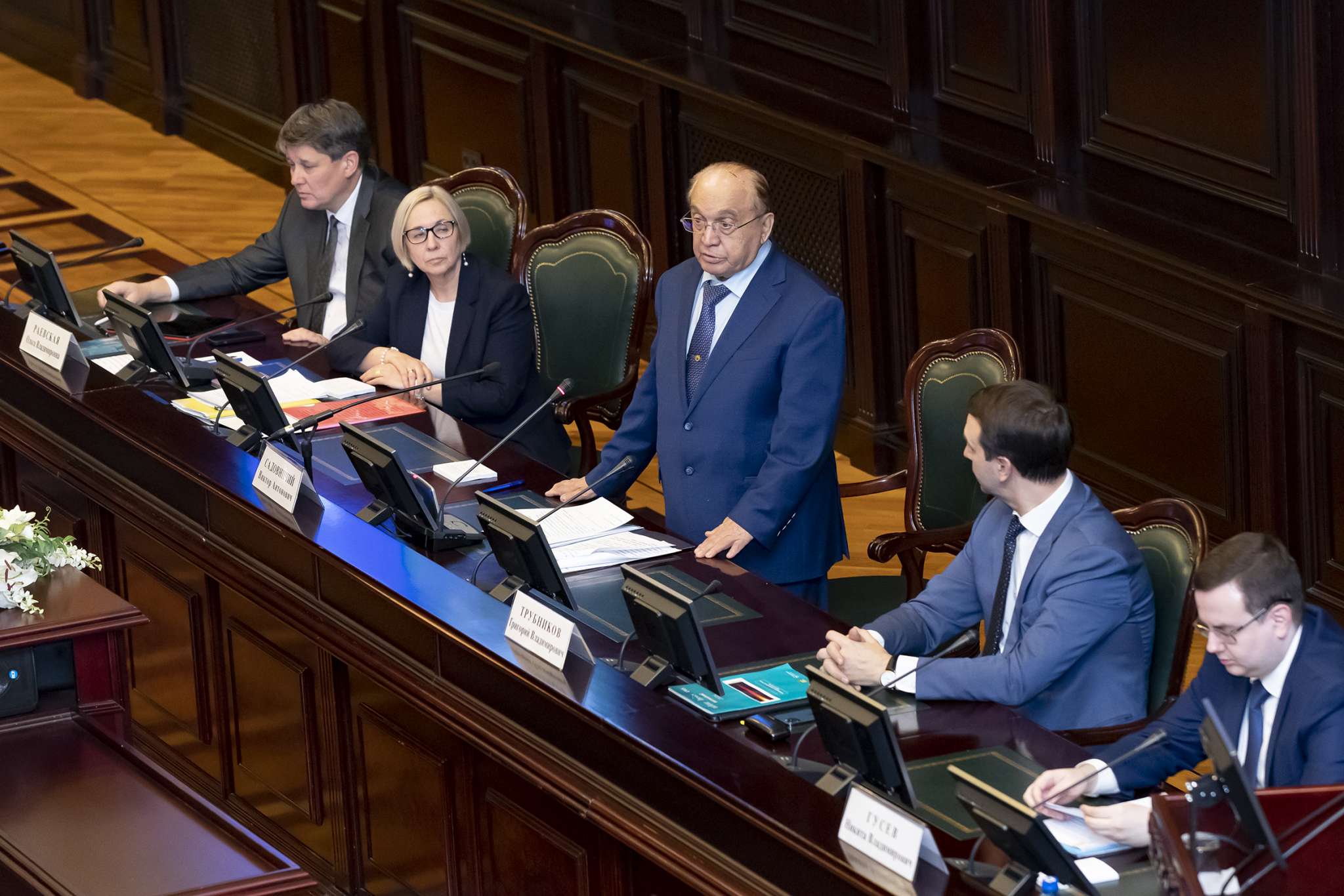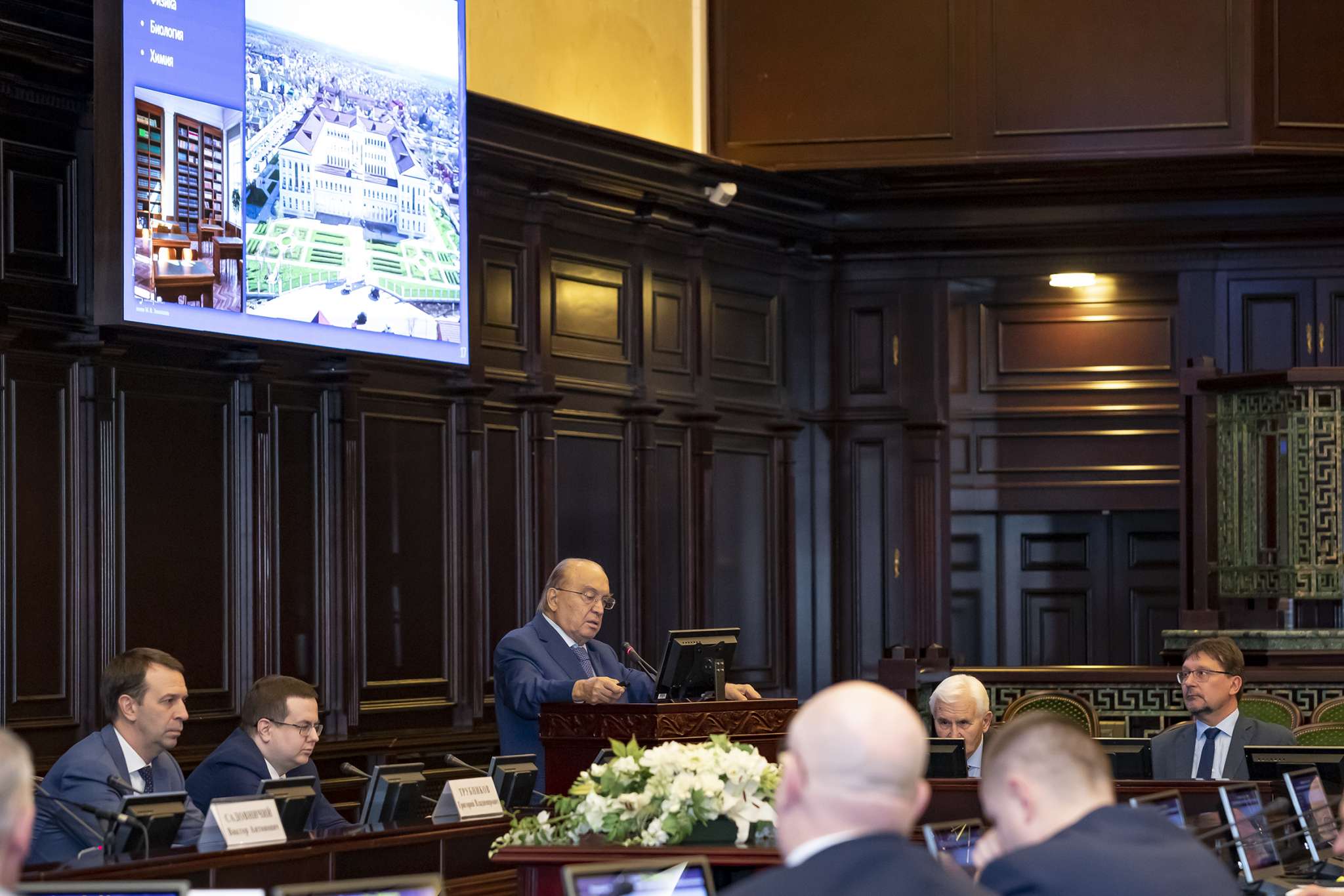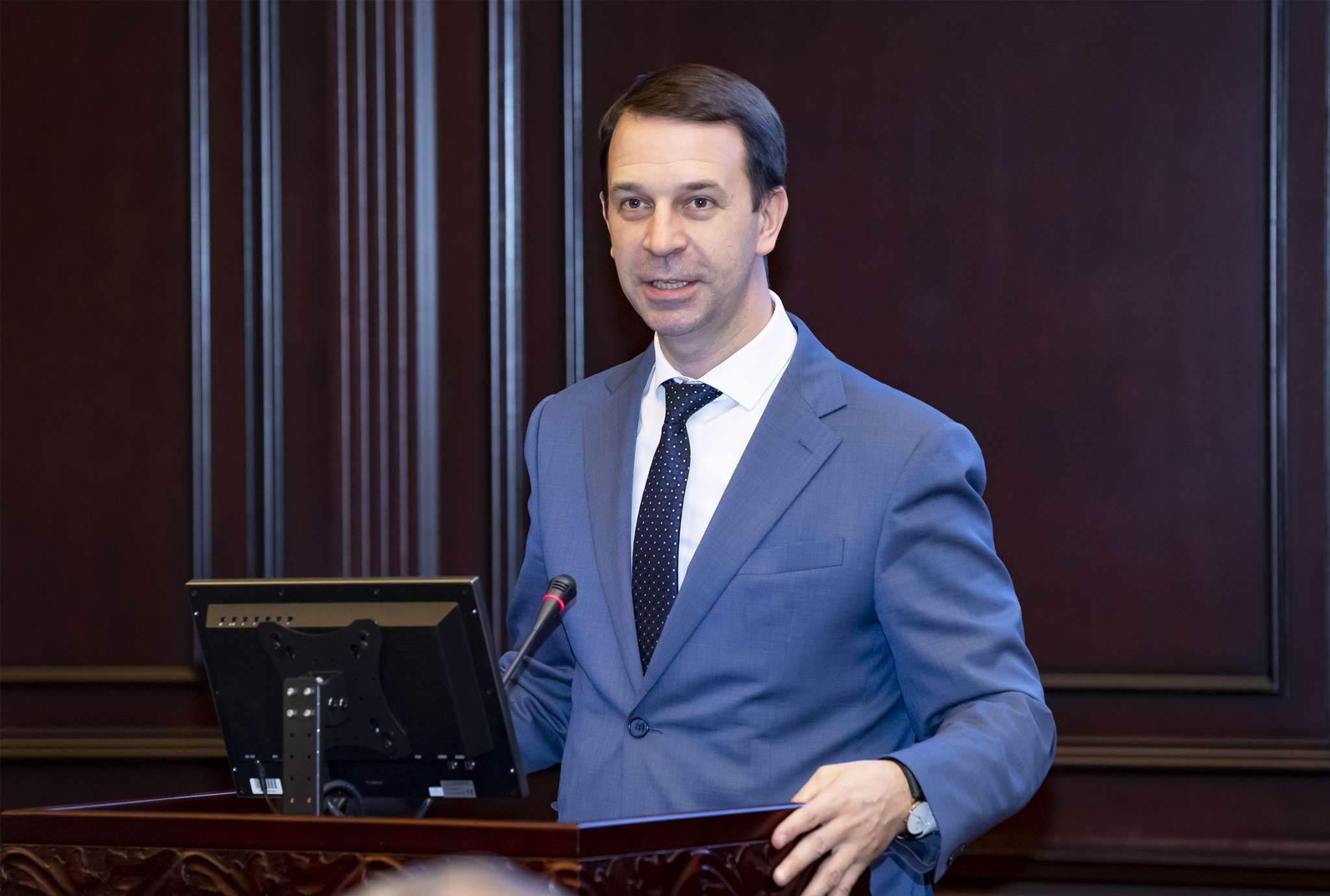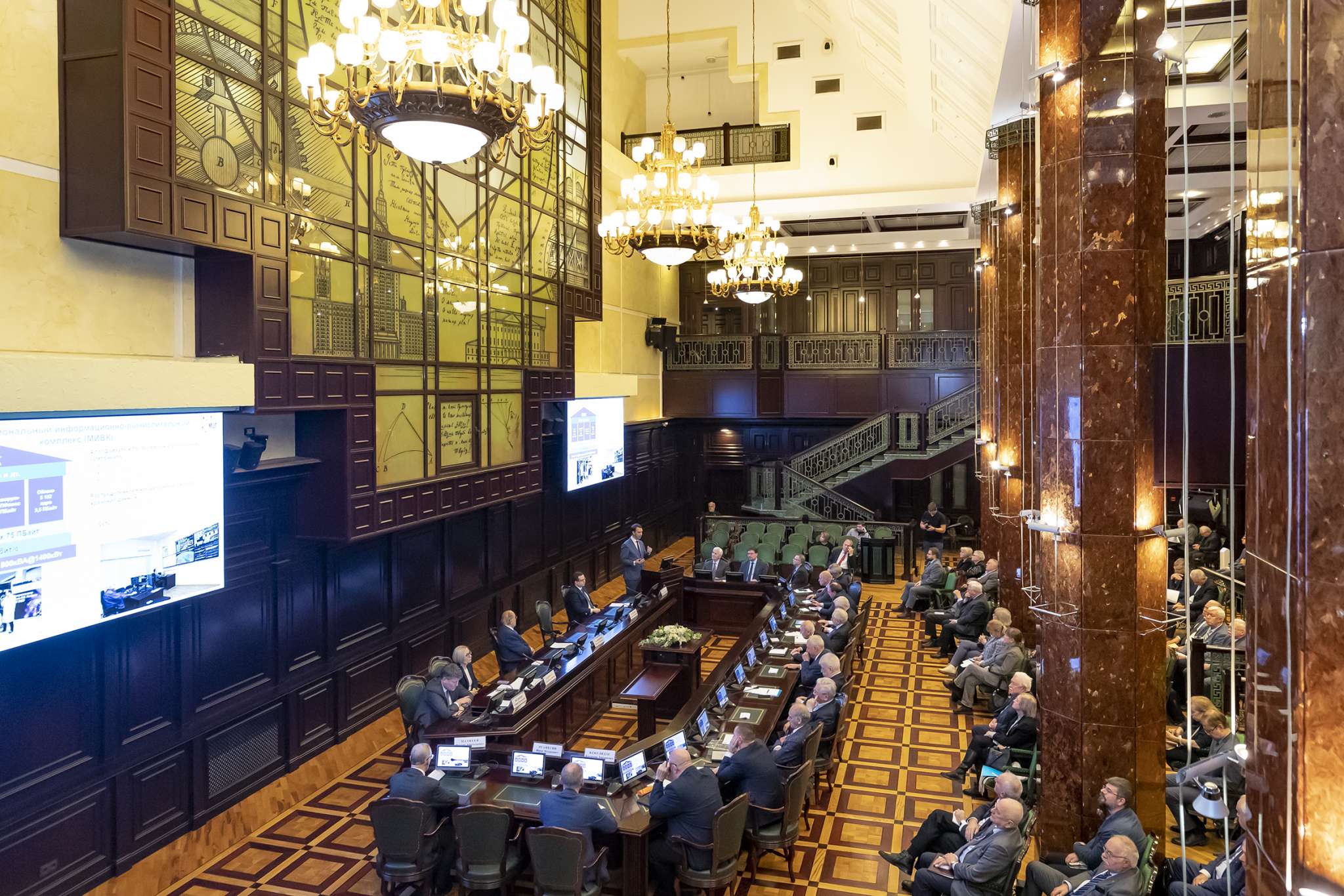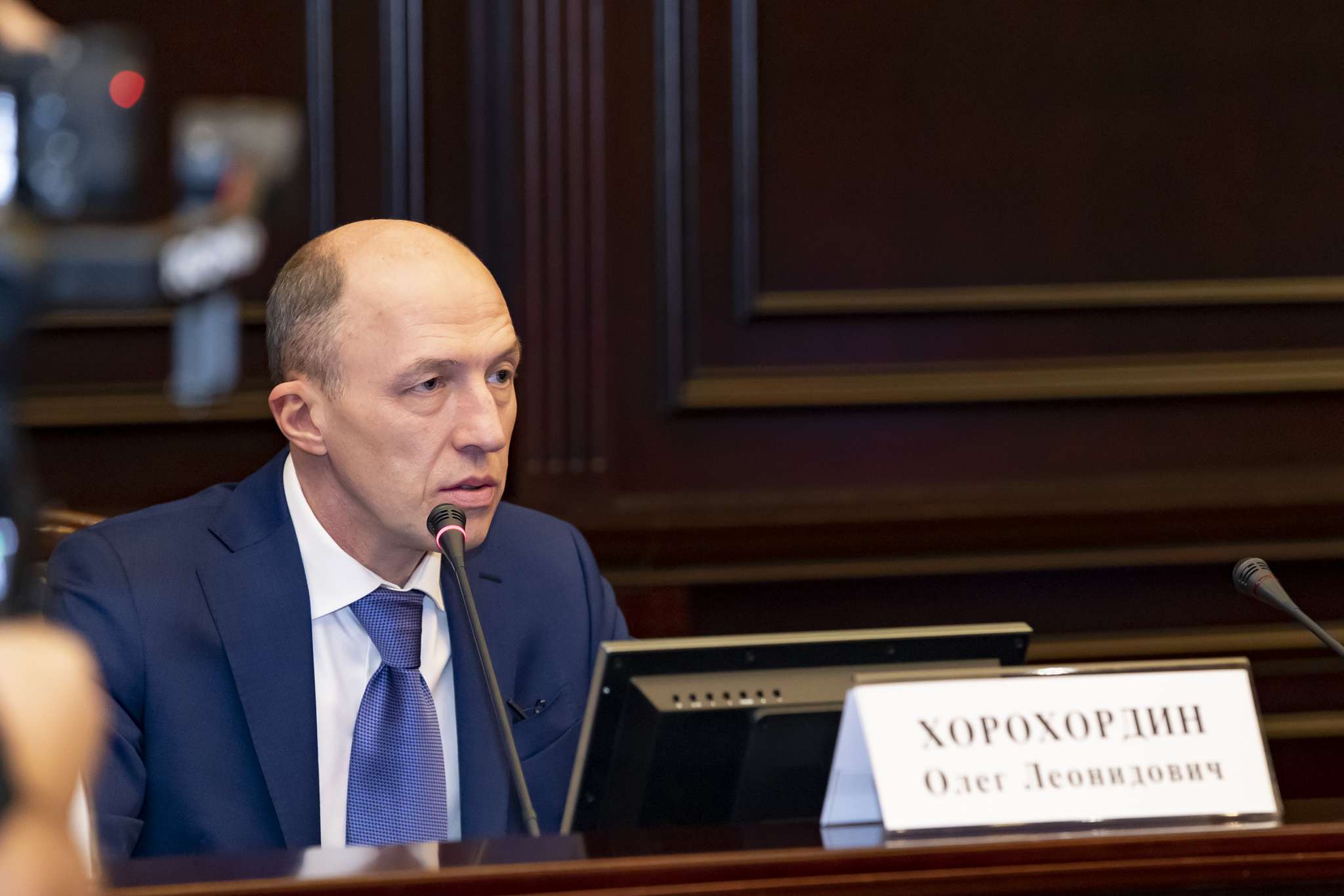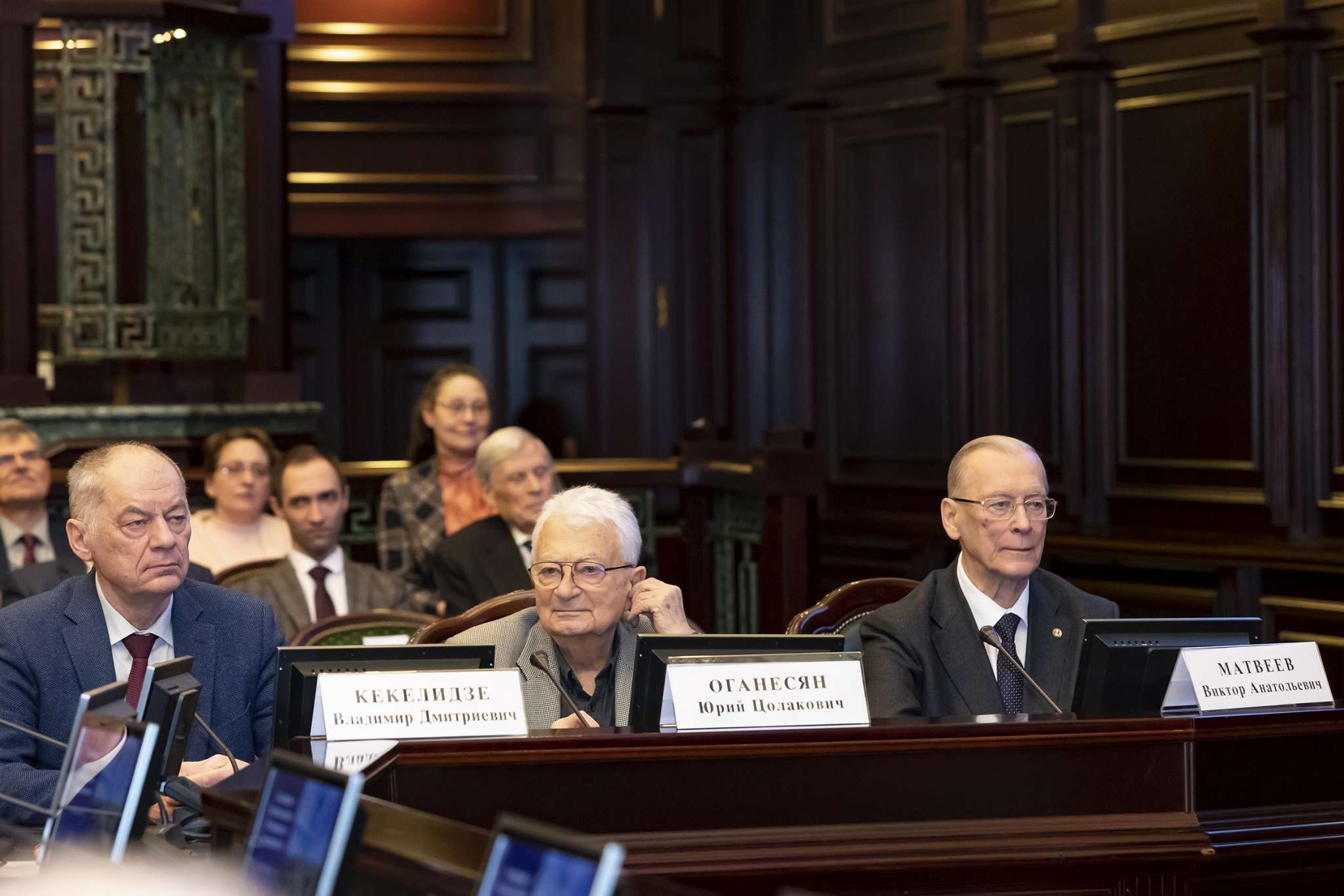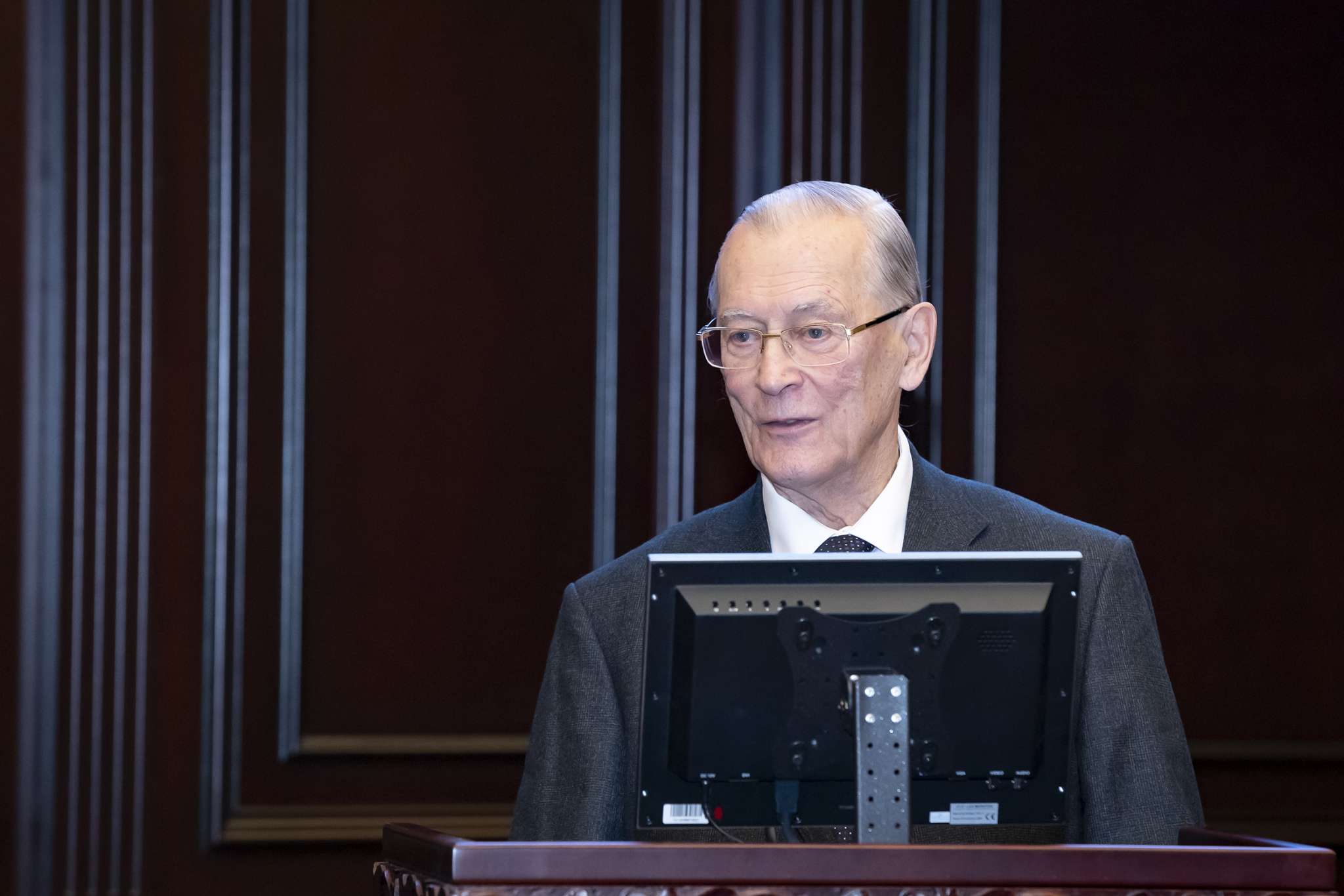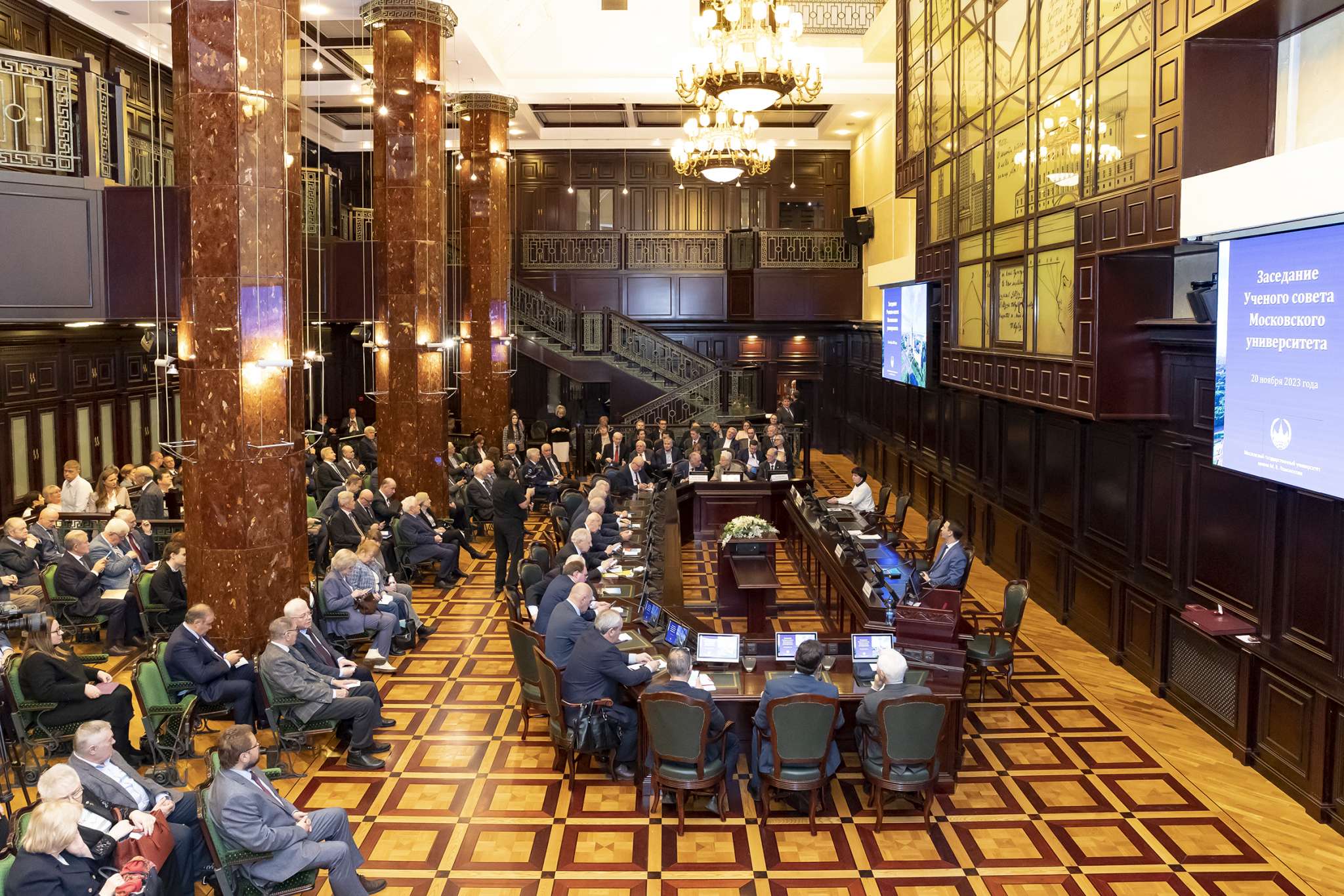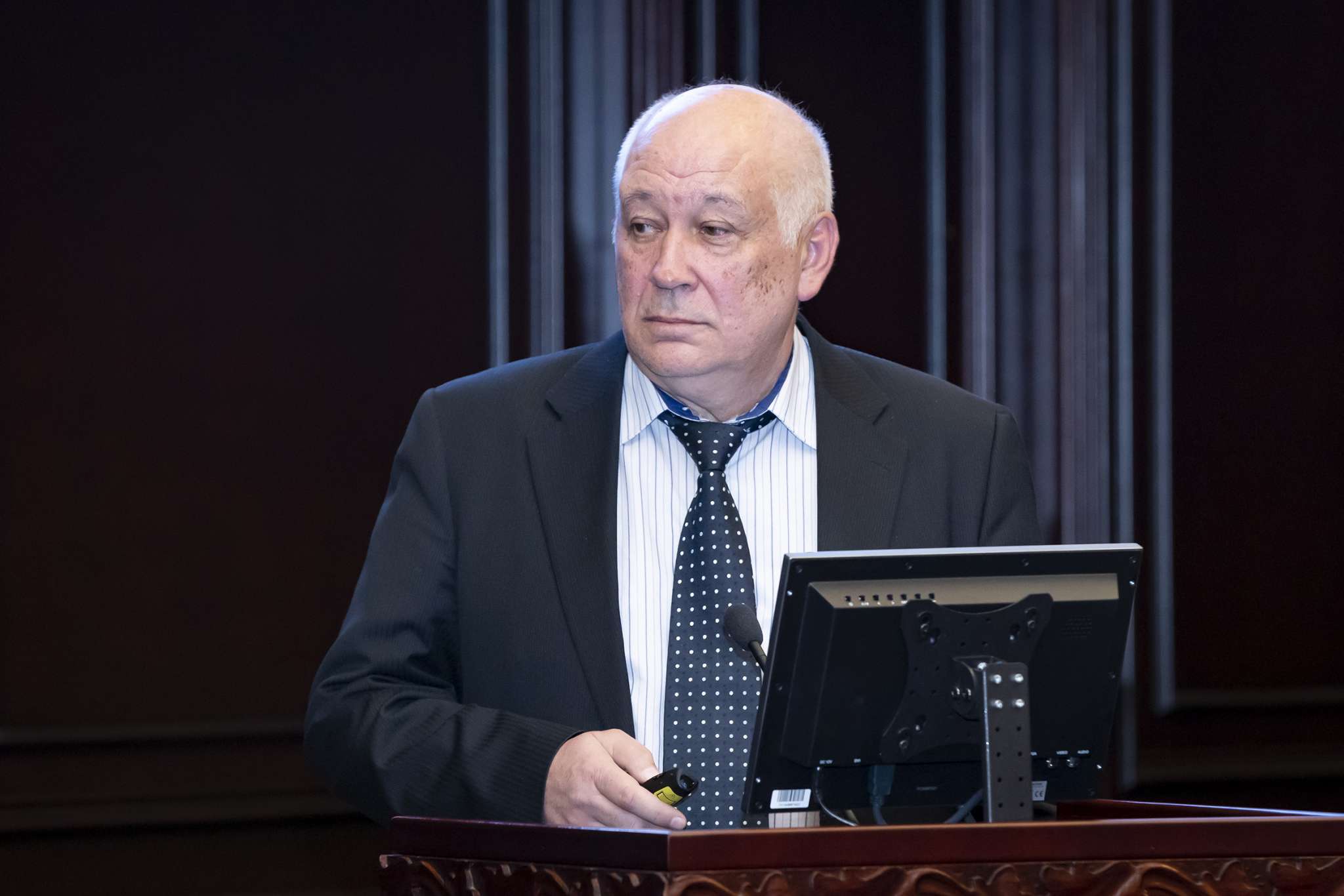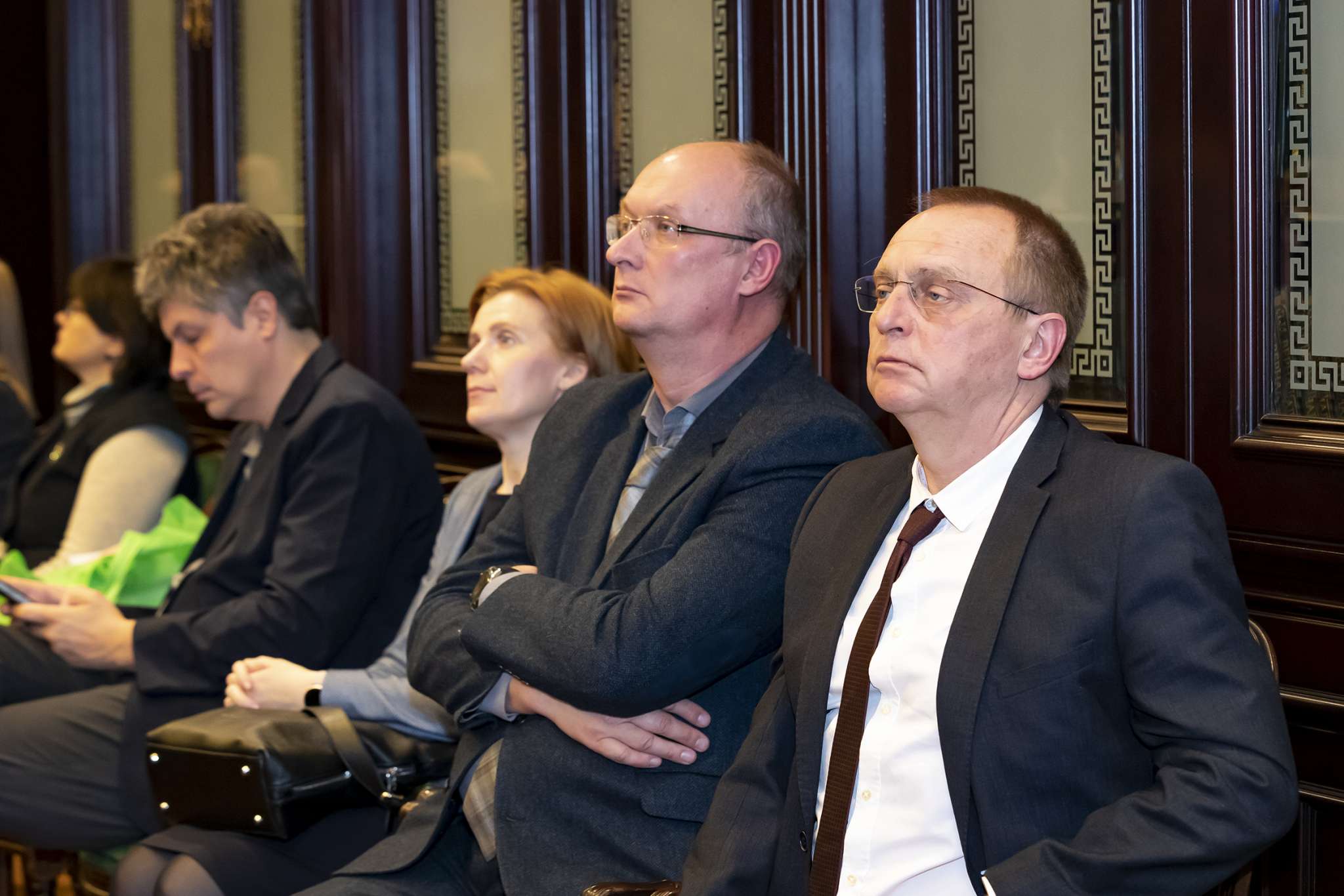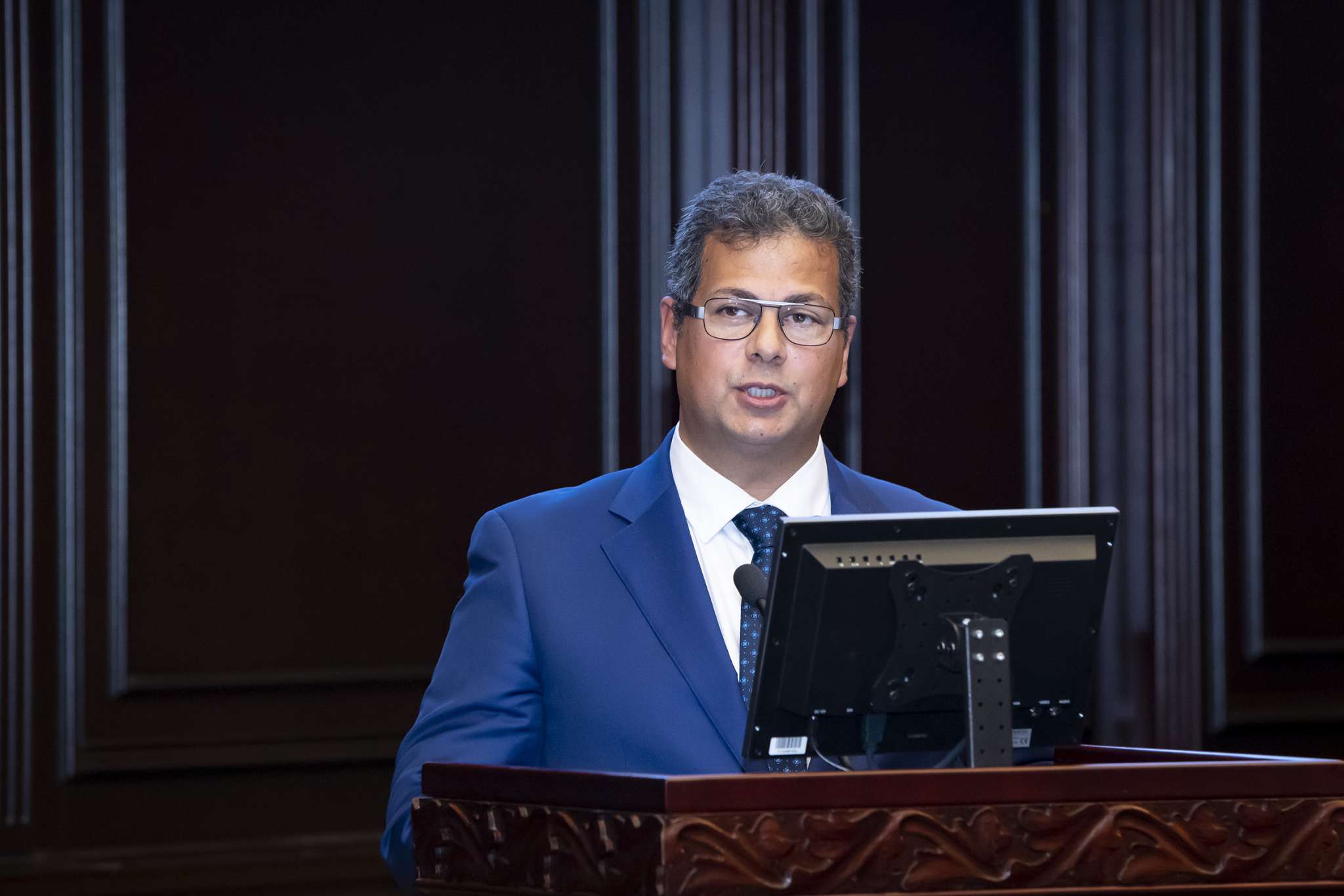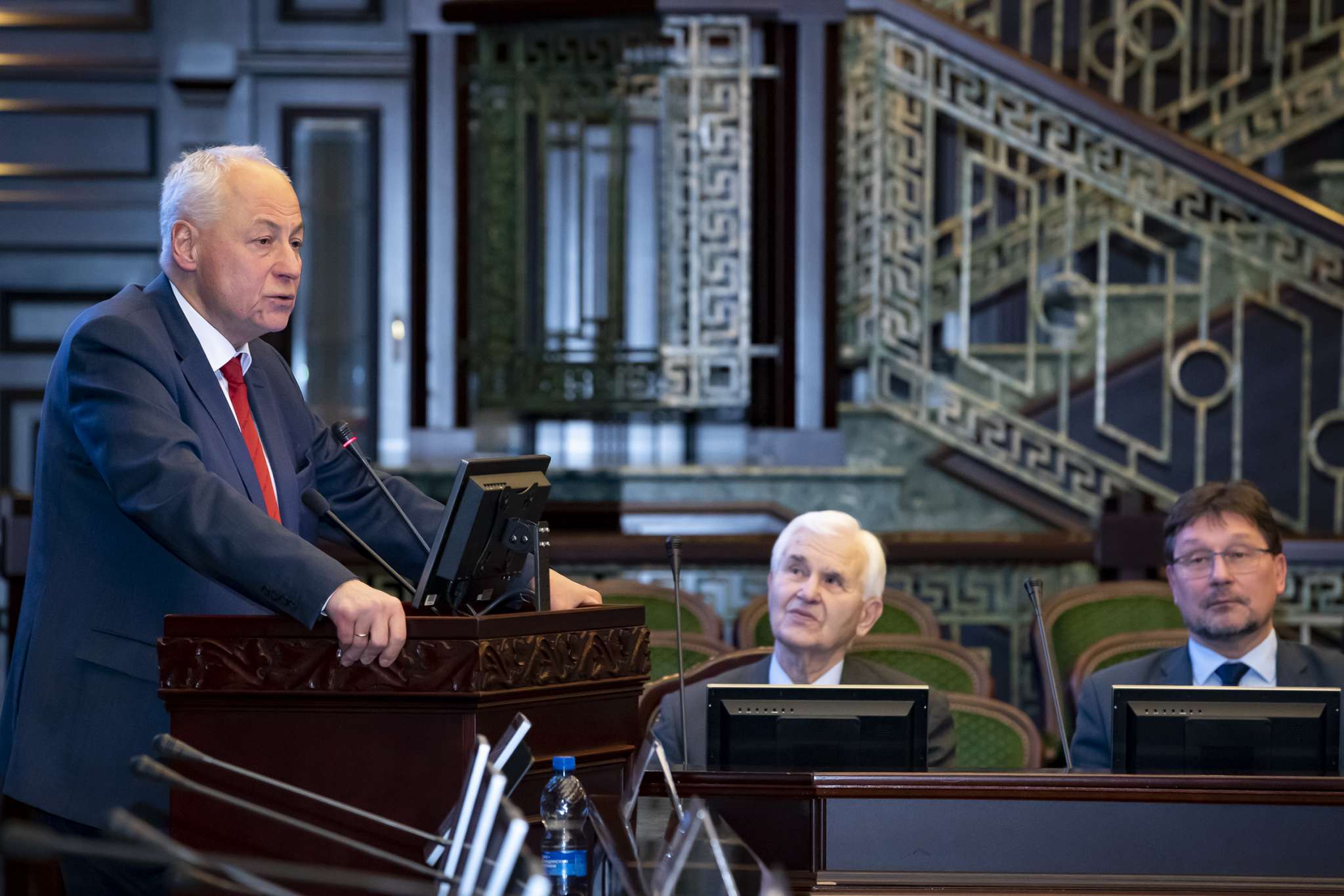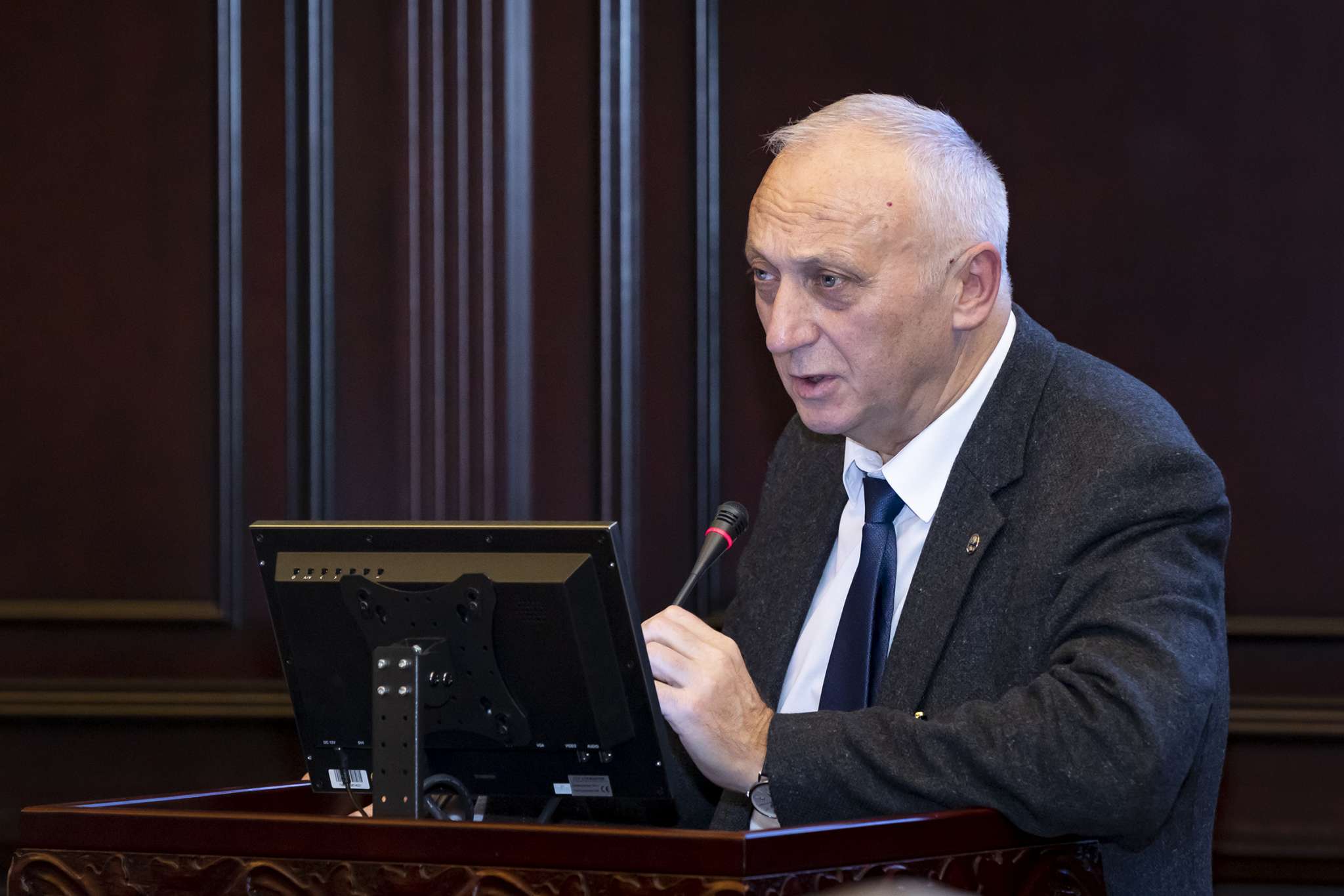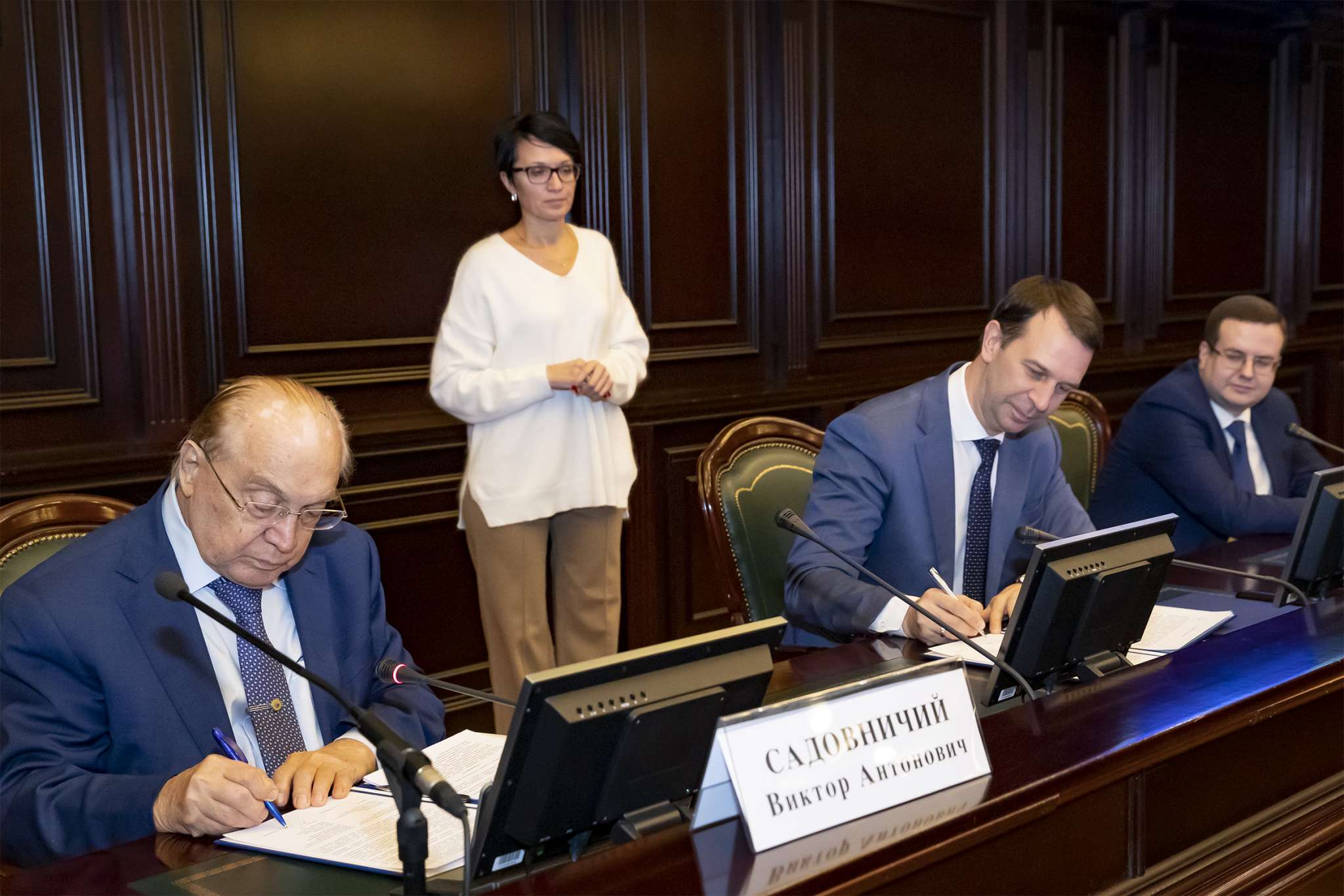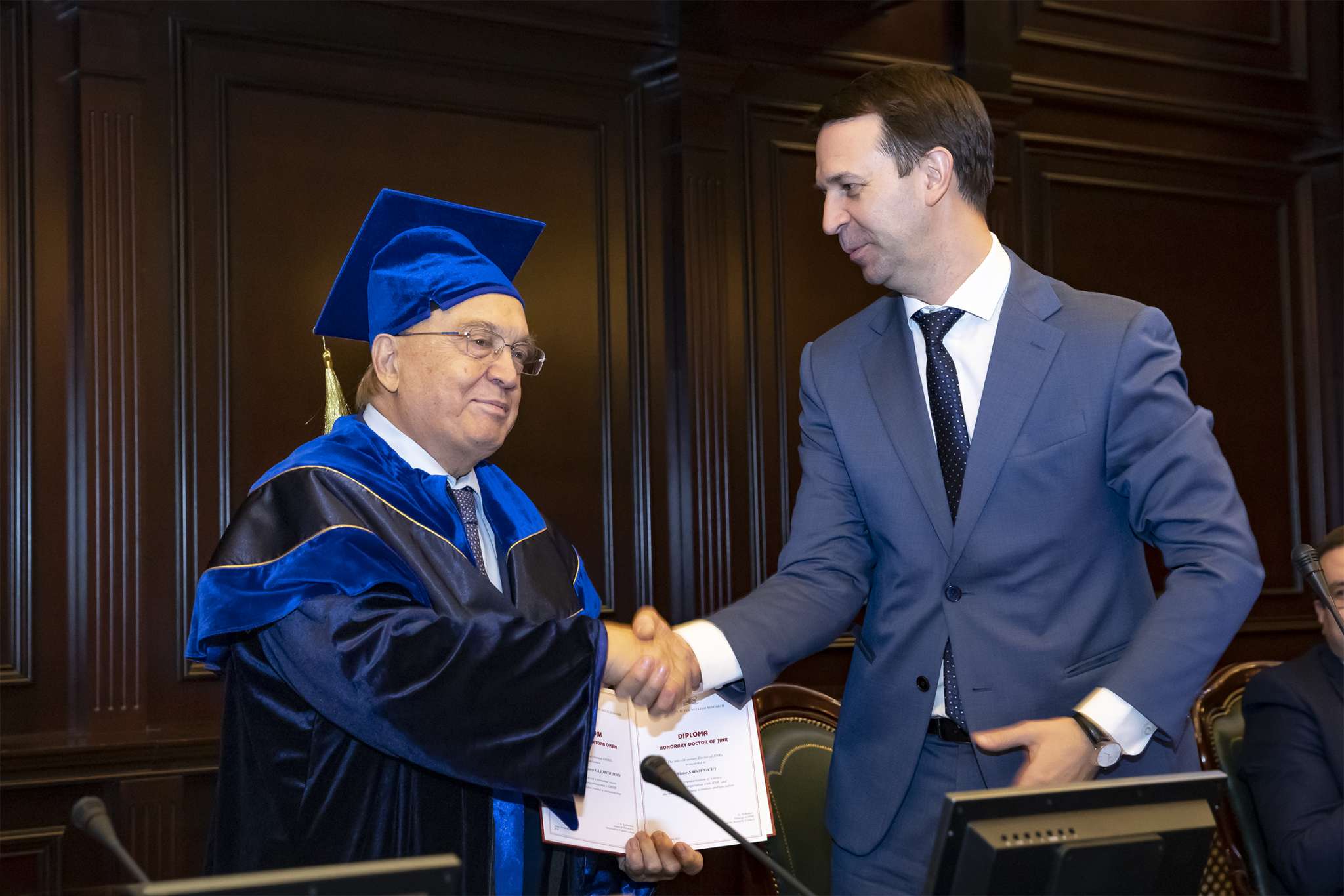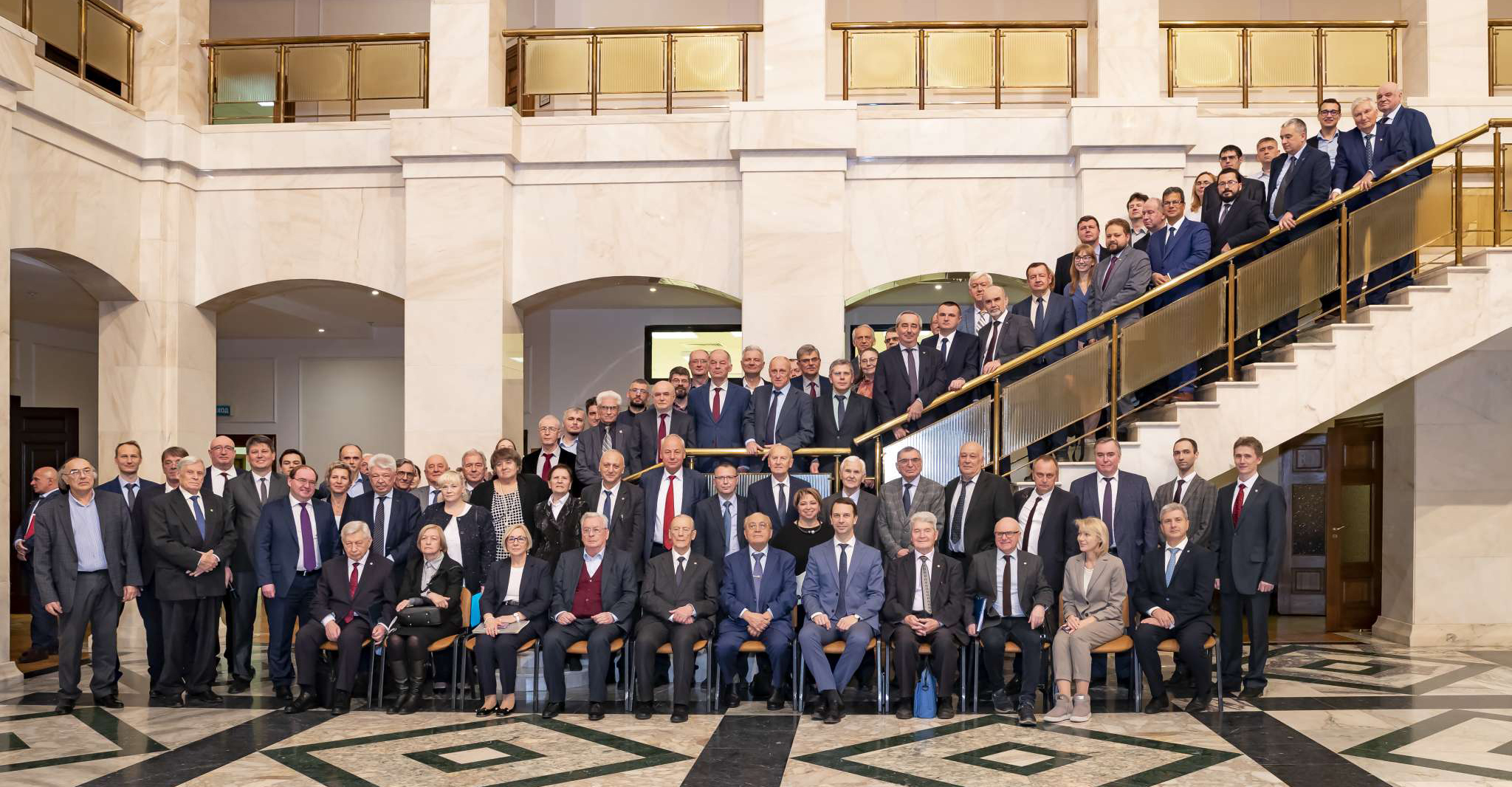JINR and MSU signed cooperation agreement
News, 22 November 2023
The document promotes cooperation between the Joint Institute for Nuclear Research and the Lomonosov Moscow State University (MSU) in terms of education, joint implementation of scientific projects, and use of IT infrastructure. The agreement also provides for the active development of the MSU branch in Dubna. JINR Director Grigory Trubnikov and MSU Rector Victor Sadovnichy signed the document during a meeting of the MSU-JINR Scientific Council on 20 November 2023.
JINR and MSU have close scientific and educational ties. Many of the JINR founding fathers were graduates and professors of MSU and cooperated with the SINP MSU branch in Dubna (1961-2015). Leading MSU scientists are members of the JINR Scientific Council and the Institute’s Programme Advisory Committees. In 2022, the opening of the MSU branch in Dubna took place. The Department of Elementary Particle Physics (Head: JINR Scientific Leader, RAS Academician Victor Matveev) and the Department of Fundamental and Applied Nuclear Physics (Head: JINR Director, RAS Academician Grigory Trubnikov) continued to work with renewed vigour. The two departments provide education for over 30 students.
Under the agreement, the parties will conduct collaborative projects on physics of elementary particles and atomic nuclei, as well as condensed matter physics using nuclear physics methods. Other fields for future joint research are astrophysics, radiobiology, and ecology. JINR and MSU also agreed to strengthen cooperation in the area of telecommunications infrastructure and information technology and establish the grid segments of JINR and MSU. Victor Sadovnichy said that the potential of the new MSU-270 Supercomputer will be used to solve joint tasks.
JINR Director, RAS Academician Grigory Trubnikov presented plans for the development of the MSU branch in Dubna to the MSU Scientific Council. “There are currently two departments, and we plan to at least double the number. We are prepared to open the Department of Big Data and Computing; the development of educational programmes is almost finished,” JINR Director said. He expressed confidence that the future department of the MSU branch in Dubna, the Faculty of Computational Mathematics and Cybernetics (CMC) and the Department of Applied Mathematics and Computer Science of the MSU branch in Sarov will become a complementary ecosystem that will be able to adopt a common educational plan and set practical tasks for both Sarov and Dubna students. According to Grigory Trubnikov, the plan is to open the second department, Department of Radiobiology and Radiochemistry, in the academic year 2024-25 as an exceptional educational area at the intersection of several sciences. The Institute will establish this department in cooperation with the MSU Faculty of Chemistry.
JINR Director thanked Victor Sadovnichy and his team for their support in organizing the work of the branch every step of the way, from the decision to establish it to obtaining licenses and admitting the first students. Grigory Trubnikov presented Victor Sadovnichy with a mantle and a diploma of Honorary Doctor of JINR. The Institute’s Scientific Council made the decision to confer the title to Professor Sadovnichy this September.
MSU Rector, RAS Academician Victor Sadovnichy noted that the aim of the agreement is to expand joint scientific and educational activities at the MSU branch. “JINR and MSU are leaders in fundamental research in nuclear physics and fields of natural sciences related to it. We have a long history of cooperation established by outstanding Russian physicists teaching at MSU. Since last year, we also have a common future that we can shape by developing the branch. Our shared task is to ensure national technological development and the implementation of breakthrough scientific research. This will require us to train highly professional personnel. The signing of this agreement is a historic event,” Victor Sadovnichy highlighted. He noted that the signing will contribute to the establishment of the Sparrow Hills Innovative Science and Technology Centre by MSU. The centre will allow high-tech companies to implement applied projects in the most advanced areas of science together with the University’s scientists.
Deputy Director of the MSU branch in Dubna Alexander Olshevsky emphasised that the branch provides highly effective educational programme. He noted that from 1963 to 2015, more than 70% of graduates, including those from the JINR Member States, found jobs in their specialty both at JINR and in other scientific centres. From 2019 to 2023, 49 masters received education at the branch. More than half of them continued scientific research, with a third becoming employees of the Institute’s laboratories. “JINR’s extensive scientific programme requires a much broader approach to education. Therefore, the principal task of the branch from 2022 is to interact not only with the Faculty of Physics, but also with other MSU faculties. We are primarily working with the CMC Faculty due to our historical ties, but we are sure that soon many other specialisations will be represented in Dubna,” Alexander Olshevsky said.
JINR Scientific Leader, RAS Academician Victor Matveev recalled that since the 1960s, more than 1,200 students and postgraduates have studied at the Dubna branch, forming the human resource potential of JINR and its Member States. He noted that it contributed to the strengthening and development of international cooperation with these countries. “The union of science and education implemented in Dubna has proved its effectiveness. There is no doubt that further strengthening of the creative scientific and educational ties between MSU and JINR at the MSU branch in Dubna will be successful,” he stressed. In addition, the lectures delivered at the branch served as a basis for numerous monographs, textbooks, and manuals, which are still relevant and well known. “To this day, what motivates youth to engage in science most is the ability to communicate with world-class scientists and conduct research at advanced facilities,” Victor Matveev stated.
A DLNP JINR senior researcher Wael Badawy spoke about the JINR educational programme. He noted that it is implemented in various forms, including student practices and internships, along with programmes for young scientists at the JINR University Centre, 13 JINR-based departments in 6 Russian universities, and 11 JINR Information Centres in many regions of Russia and other JINR Member States. “Despite the fact that JINR’s main activity is scientific research, we pay a lot of attention to training personnel for the Member States,” he noted. According to the figures cited, representatives of more than 30 countries have participated in international student programmes over the past 20 years, and the number of students has gone over 300 annually. 363 people in JINR are currently preparing dissertations of various levels.
The JINR delegation at the meeting of the MSU-JINR Scientific Council consisted of about 50 employees, including directors of the Institute’s laboratories and scientists involved in joint projects. The delegation consisted of representatives of Russia, Belarus, Bulgaria, Egypt, and Kazakhstan.
